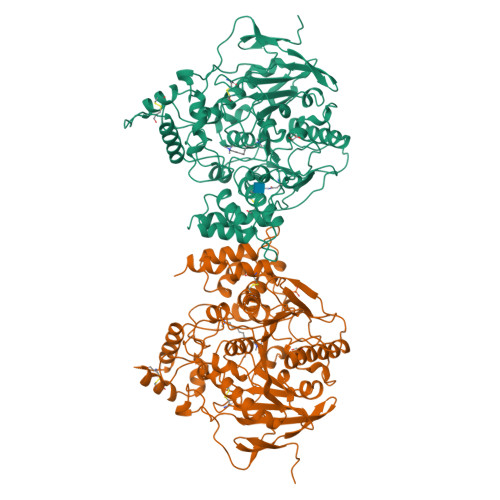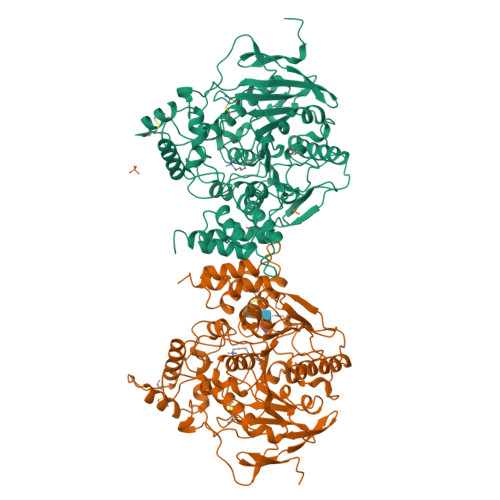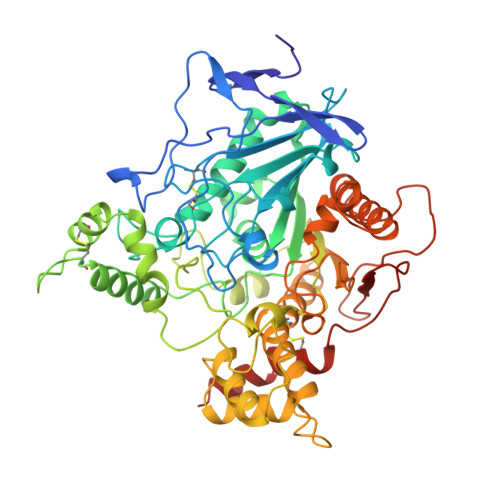Crystal structure of mouse acetylcholinesterase. A peripheral site-occluding loop in a tetrameric assembly.
Bourne, Y., Taylor, P., Bougis, P.E., Marchot, P.(1999) J Biological Chem 274: 2963-2970
- PubMed: 9915834
- DOI: https://doi.org/10.1074/jbc.274.5.2963
- Primary Citation of Related Structures:
1MAA - PubMed Abstract:
The crystal structure of mouse acetylcholinesterase at 2.9-A resolution reveals a tetrameric assembly of subunits with an antiparallel alignment of two canonical homodimers assembled through four-helix bundles. In the tetramer, a short Omega loop, composed of a cluster of hydrophobic residues conserved in mammalian acetylcholinesterases along with flanking alpha-helices, associates with the peripheral anionic site of the facing subunit and sterically occludes the entrance of the gorge leading to the active center. The inverse loop-peripheral site interaction occurs within the second pair of subunits, but the peripheral sites on the two loop-donor subunits remain freely accessible to the solvent. The position and complementarity of the peripheral site-occluding loop mimic the characteristics of the central loop of the peptidic inhibitor fasciculin bound to mouse acetylcholinesterase. Tetrameric forms of cholinesterases are widely distributed in nature and predominate in mammalian brain. This structure reveals a likely mode of subunit arrangement and suggests that the peripheral site, located near the rim of the gorge, is a site for association of neighboring subunits or heterologous proteins with interactive surface loops.
Organizational Affiliation:
CNRS, Unité Propre de Recherche 9039, Architecture et Fonction des Macromolécules Biologiques, Institut de Biologie et Microbiologie Structurale, F-13402 Marseille Cedex 20, France.






















